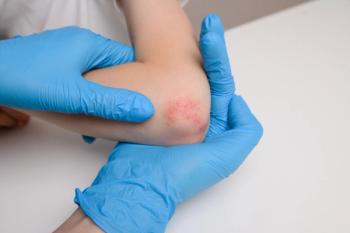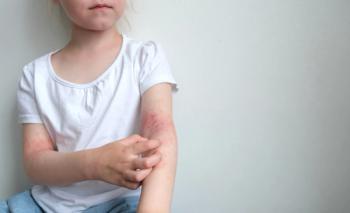
Dupixent Clinical Trial Results for Atopic Dermatitis Bolstered by Real-World Evidence
Data gathered from an electronic medical record found the results in a real-world patient population with atopic dermatitis were consistent with those found in clinical trials.
Results gathered from clinical trials do not always reflect the real-world patient population, but a new study using an electronic medical record (EMR) database has found that patients treated with Dupixent (dupilumab) in the real world achieved outcomes consistent with clinical trials.
The researchers sought to evaluate the real-world effectiveness of Dupixent in adults with moderate-to-severe atopic dermatitis (AD) over a time period that was comparable to clinical trials of Dupixent. The findings were
While there have been other real-world studies on the effectiveness of Dupixent, they were either in small populations or from a limited number of study sites, the authors noted.
They used the Modernizing Medicine’s Electronic Medical Assistant (EMA) dermatology-specific EMR database, which contains structured, real-world data from more than 30% of the dermatologists in the United States. This database allowed the researchers to extract AD assessments, such as severity based on the six-point Investigator Global Assessment (IGA) scale (0 = clear to 5 = very severe), itch severity based on a numerical rating scale (NRS; 0 – no itch to 10 = most severe itch) and body surface area (BSA) affected.
There was a total of 1,466,601 patients with AD in the database, of which 22,914 were initiated on Dupixent during the study. After applying the inclusion criteria, there were 3 different cohorts, which partially overlapped:
- 435 patients with IGA ≥ 3
- 112 patients with NRS ≥ 3
- 387 patients with BSA ≥ 10%
The mostly widely used therapy prior to the index date was topical corticosteroids in 77.0% in the IGA cohort, 83.0% in the NRS cohort and 72.4% in the BSA cohort.
After 4 months of Dupixent, 72.0% of patients in the IGA cohort saw their score improve to ≤ 2 including 42.8% who achieved a score of IGA 0/1. At baseline, 41.6% of patients in this cohort had an IGA score of 3 and 58.4% had a score of 4/5.
Among the NRS cohort, the mean score was reduced to 2.8 after four months of treatment down from a mean score of 7.0 prior to starting Dupixent. “This reduction was driven by a shift in distribution from higher severity levels during the pre-index period, with 70.5% reporting scores in the ‘mild range’ at month 4, including almost one-quarter of the patients (24.1%) with no itch,” the authors wrote.
There was also a significant reduction in BSA affected. During the pre-index period, the reported BSA was 39.3%, which dropped to 16.3% after four months of treatment with Dupixent. When stratified by age, sex and treatment history, there were similar reductions observed.
“On all outcomes, the results showed that the majority of patients achieved benefits after initiation of dupilumab therapy that were statistically significant, clinically meaningful, and consistent with improvements in AD observed at similar time points in the dupilumab clinical trials and other real-world studies,” the authors wrote.
They noted several limitations. First, the data evaluated in the study are optional fields in EMRs and only a small proportion of patients had these data elements recorded both prior to and after initiating Dupixent. In addition, while clinical trials assessed itch severity using the average of daily scores for a week, this study only used a single time point.
Ultimately, the researchers reported that the study corroborated the findings from Dupixent clinical trials.
“These results showed that, in adults with moderate-to-severe AD treated with dupilumab in routine clinical practice, significant and clinically meaningful improvements in clinician-assessed global AD severity were consistently achieved by the majority of patients, with significant and substantial reductions in patient-reported itch severity as well as in BSA affected,” they concluded.
Reference
Eichenfield LF, Armstrong A, Guttman-Yassky E, et al. Real-world effectiveness of dupilumab in atopic dermatitis patients: analysis of an electronic medical records dataset. Dermatol Ther (Heidelb). 2022 May 11. doi: 10.1007/s13555-022-00731-z. Online ahead of print.
Newsletter
Pharmacy practice is always changing. Stay ahead of the curve with the Drug Topics newsletter and get the latest drug information, industry trends, and patient care tips.











































































































































































































